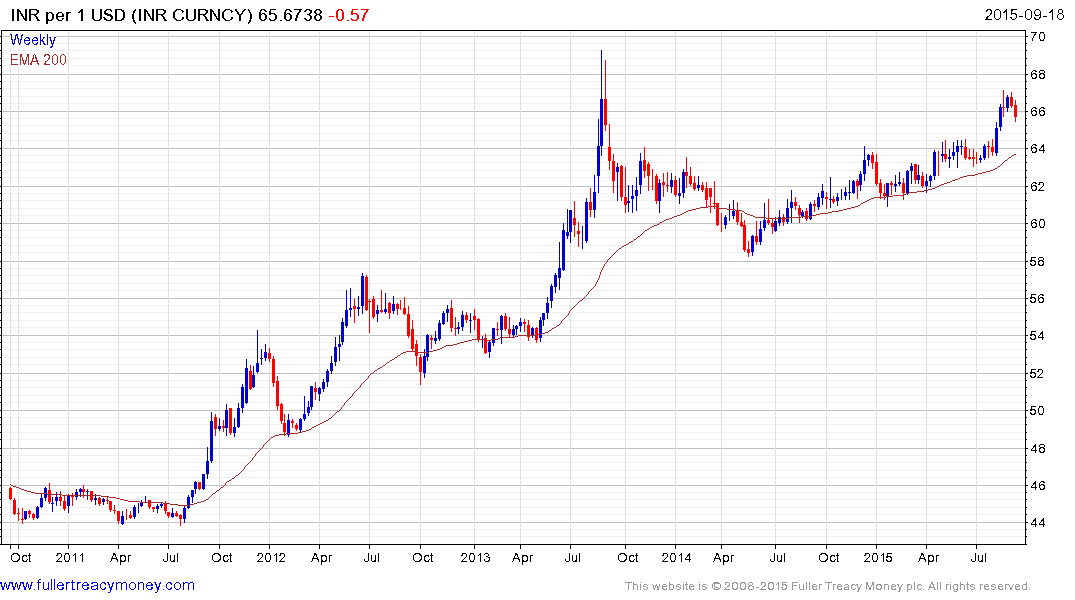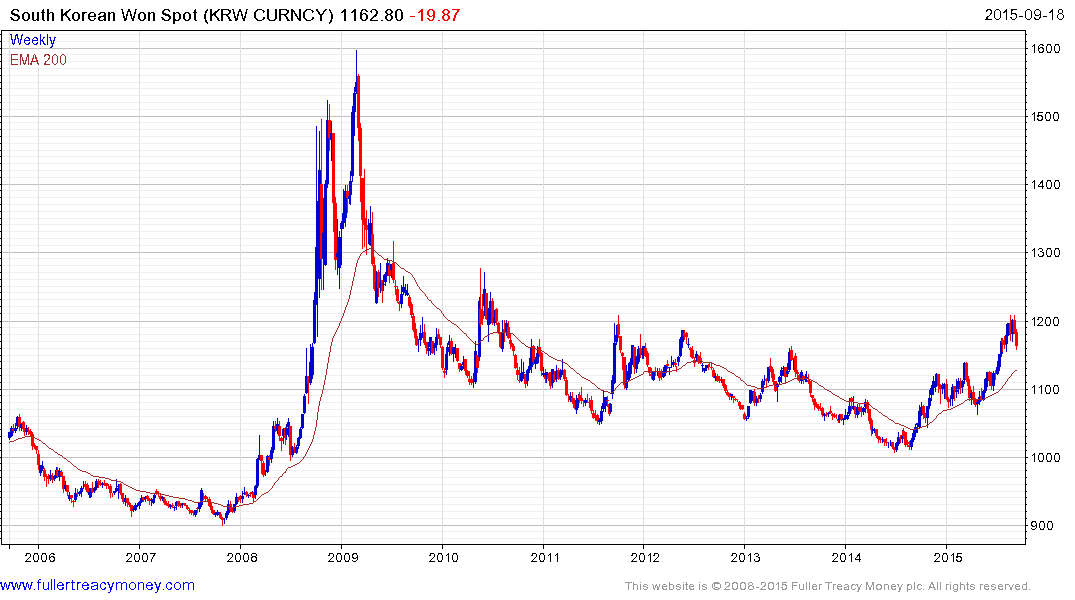Fed on Hold Is Mexico Reprieve as Carstens Seeks to Boost Growth
This article by Brendan Case for Bloomberg may be of interest to subscribers. Here is a section:
The Federal Reserve’s decision to keep interest rates unchanged is buying Mexico time to kick-start its sluggish economy.
Mexico’s central bank, led by Governor Agustin Carstens, will leave benchmark borrowing costs at a record low 3 percent Monday, according to the median estimate of 11 analysts in a Bloomberg survey. Before Thursday, they were forecasting Mexico would follow a Fed rate boost with one of its own. Bets on short-term rates in the swaps market also fell the most in six months.
Banco de Mexico has cut its growth forecast for Latin America’s second-largest economy by more than a percentage point this year in the wake of tumbling oil prices. The faltering expansion has helped push Mexico’s inflation rate to the lowest level in almost half a century. Still, policy makers have signaled they’re likely to raise rates when the Fed does to preserve Mexico’s interest-rate advantage over the U.S. and keep foreign investors from pulling out their capital.
“The central bank of Mexico will likely remain on hold next Monday on the back of today’s Fed decision,” Alonso Cervera, chief Latin America economist at Credit Suisse Group AG, said by e-mail Thursday. “Inflation data in Mexico have been benign, inflation expectations have remained stable and the economy has disappointed year-to-date.”
The financial media was abuzz yesterday with stories on how the Fed is a central banker to the world. This might have been one of the first times a sitting Fed chairperson has mentioned the impact of global economics in decision making but that does not mean it is new. Emerging markets now account for approximately half of global GDP. What happens overseas matters and the relative position of the Dollar is important. This is not news. Global investors have always known this.
Many high growth markets spent much of the last decade accumulating Dollars in an effort to hold back the ascent of their own currencies for fear they would lose competitiveness. The Dollar’s strength over the last year has turned the tables on the trade. Central banks are now forced to spend Dollars and offer higher interest rates to promote confidence in their currencies and by extension their economies.
Evidence of stability in emerging markets currencies will be an important barometer for global investors looking for bargains not least as the recent devaluations will have created much improved competitive positions for many economies.
.png)
The Mexican Peso is oversold by any measure so potential for a reversionary move has increased. However a sustained move below the mean would be required to question the US Dollar’s medium-term pre-eminence.

The Indian Rupee was notable today by being one of the biggest gainers in emerging markets. The prospect of mean reversion is looking more realistic but a sustained move below the MA would be required to signal a return to medium-term demand dominance by Rupee.

The US Dollar encountered resistance in the region of KRW120 last week and pulled back further this week to signal a peak of least near-term significance against the Korean Won.
Back to top


